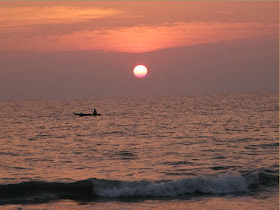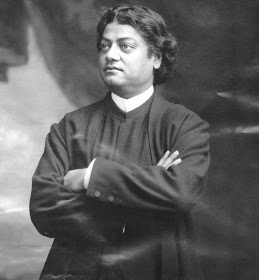"The identity of an individual is essentially a function of her choices, rather than the discovery of an immutable attribute."
-Amartya Sen in 'The Argumentative Indian: Writings on Indian History, Culture and Identity'
This book is one of the best-known books of Nobel Laureate Amartya Sen. 'The Argumentative Indian' is a collection of sixteen essays on Indian History, Polity, Culture, Tradition, and Identity. Out of sixteen essays, few are very detailed, showing the meticulous research that the author did before writing them. Sometimes the author can be seen to be justifying the titles of essays and topics in too many paragraphs, but altogether it was a nice read, provoking thoughts on a large number of issues. The book gives a detailed account of early seculars like Akbar. .
In this book, Sen fights the notion that Indians have been irrational in their activities since ancient times. Instead, he argues by giving historical examples that the argumentative nature has existed since time immemorial. He gives the example of Gargi in Brihadaranyaka Upanishad and of Maitreyi, Yajnavalkya’s wife. Gargi poses a question that even if one accumulates a huge amount of wealth, what should he do to become immortal. This assertion has been quoted and discussed many times in Indian Mythology and Philosophy. The arguments between Krishna and Arjuna at the battlefield of Kurukshetra also make an interesting example. When Arjuna refuses to fight against his relatives, Krishna preaches him about the importance of one's duty. That moment Krishna might have won the argument, but after the epic Mahabharata war, desolation might have proved Arjuna's concerns right. Also in India, people were free to choose their beliefs. Skeptics, agnostics, and atheists have existed throughout Indian History, without being persecuted for going against the established beliefs. Aryabhatta did not have to meet the fate of Galileo. In these lands, religions like Hinduism, Jainism and Buddhism existed without any Holy War or Crusade.
Next to look for are the views of Sen on the role of women in Indian Society. He distinguishes the status of women on two parameters: agency and well-being. Agency is being the agent of change or action, similar to holding a position of power where the actions and decisions of concerned woman would have considerable weight. Well-being, on the other hand, is the parity between men and women on various components of Human Development Index (HDI) like literacy, age expectancy etc. Even countries like Japan which have achieved so much in the field of the well-being of women lack as far as women’s role as an agency is concerned, as it is difficult to find women in top corporate structure or in higher governmental posts. One stark fact that needs attention is that president of Indian National Congress in 1925 was Sarojini Naidu and Britain did not have Margaret Thatcher coroneted for next 50 years. Given that president of INC was no ceremonial position, it was an achievement as many democracies did not have or just had given to women the right to vote. In recent past, Bangladesh, India, and Pakistan, all have had a female head of government which is hard to imagine even for the USA in near future.

Sen tells many dimensions of gender inequality. Sen cites the case of unequal facilities, like in rural areas girls are not encouraged to go to schools. The result is a huge difference in male and female literacy in India. There is a vast disparity in property ownership. Although the law provides for equality in the inheritance of ancestral property, it is yet to come in mass practice. One more striking fact that Sen gives us that 'Handbook of Human Nutrition Requirement' of WHO classified household work as 'sedentary activity' which can be termed as blatant negligence from the members of male-dominated society.
Western Interest in India can be categorized into three approaches according to Sen. The first is 'exoticist' approach which deals with finding what is different, what is superior in India than west. Sometimes this gives exaggerated claims which can be difficult to verify. An example of this can be given from the time when Europe was going through Industrial Revolution and that led to the onset of Imperialism. Then Eastern theorists put forward the theory of mysticism, the theme of which was that the Western Societies were the master of outer self and Indians were the masters of the inner self. Second is the 'magisterial' approach which was propagated to facilitate the foreigners to rule India. This approach said that the Indians required the guardianhood of British to live in an orderly fashion. As James Mill said Indian civilization has 'deserving to be ruled over by higher men.' The third is a 'curatorial' approach which is more rational in nature than other two. It takes into consideration the diverse aspects of India culture and contribution of India in science and other fields. Al Beruni’s Ta’rikh al-Hind, Faxian’s and Xuanzang’s travel accounts fall into this category.
Sen brings out the differences between Mahatma Gandhi and Tagore on their course of action for India. Tagore was skeptical of patriotism and nationalism. Tagore argued that patriotism can limit the freedom to engage with ideas from outside the domestic walls and also the freedom to support the causes of people in other countries. Tagore was against the traditionalism and objected to the notion of eternally believing people as a child whereas Gandhi believed that masses were incapable of raising themselves to abstract ideas. In 1908, Tagore wrote a letter to Jagdish Chandra Bose, in which he said, "patriotism cannot be our final spiritual shelter; my refuge is humanity. I will not buy glass for the price of diamonds and will never allow patriotism to triumph over humanity as long as I live."
Sen also argues that those who are leaning towards nationalism, are buying a foreign idea. He says that the first nationalist movements occurred in The West. So they are not indigenous to the people of The East. By supporting nationalism they are actually spreading a foreign Idea.
On Indian Atomic Bombs Testing in 1998, Sen has strong anti-nuclear views. He opines that India lost its conventional military superiority to nuclear parity with Pakistan after 1998 tests. He also argues that having nuclear weapons is not a guarantee that conventional wars won't happen. Kargil War vindicated this point of view. Sen argues that India could make nuclear bombs was an established fact well before 1998. There was no urgency for this test. India might have thought to be counted amongst world’s super powers but that is yet to be seen and that relies on other factors as well, economy to name one of them.
Sen quotes Ashoka, Rabindranath Tagore, Akbar and Satyajit Ray, at will, throughout the book. He gives an interesting viewpoint on Hinduism. India’s identity is of a pluralistic society and one must respect the whole spectrum of beliefs in our country. What author tried to say is that dissent should not be suppressed, but should be discussed objectively. In fact, the author considers the atheists at the other extreme of Hinduism.




